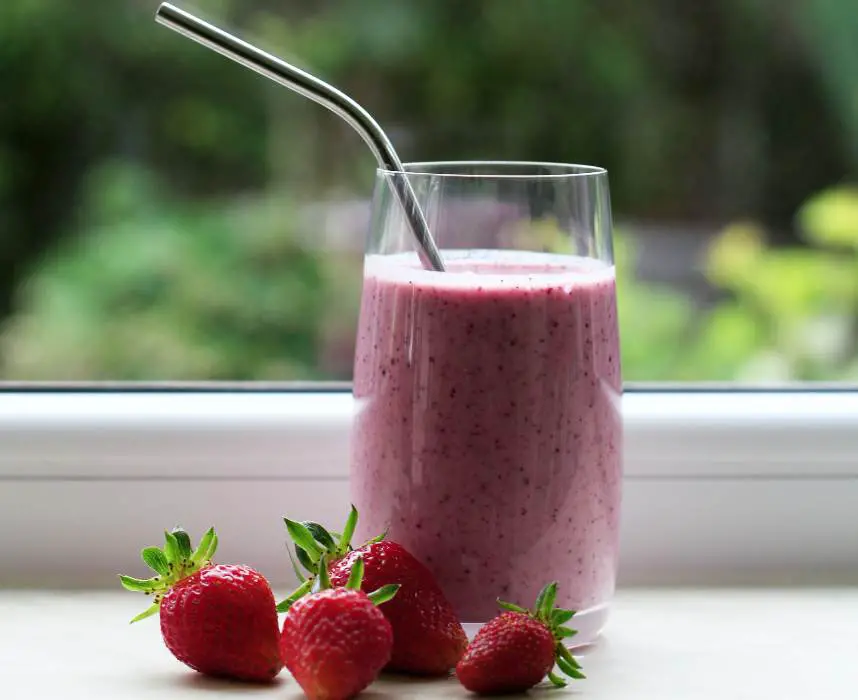
Drinking smoothies is a stellar way of boosting your fruit intake. Unless you are straining the blended fruits, you ingest everything that you put in a blender. This means that you are consuming the whole fruit (pulp and liquid).
Blending has numerous advantages but one of the main concerns is whether it raises the calories in fruits and vegetables.
This article focuses on the effects of blending on the nutrition of fruits and vegetables.
Does Blending Fruit Increase Calories?
No, blending fruit does not increase the calories or sugar unless there are other ingredients apart from the fruits. However, since you are likely to blend more fruits than you would normally eat whole, your calorie intake may increase with blended fruits.
Blending breaks down the fiber and sugars in fruits such that the body absorbs the nutrients in blended fruits and vegetables much faster than in whole fruits and veggies. The nutritional composition including fiber, sugar, and calories remains the same after blending.
How Long Do Nutrients Last After Blending?
Generally, the nutrients in a blended drink should last up to 48 hours if the drink is refrigerated upon blending. The fresher a smoothie is, the more nutritious it is and the better the flavor.
Smoothies from certain fruits and vegetables such as apples and avocados oxidize super fast and start losing some of the vitamins immediately after blending. For such smoothies, you may add freshly squeezed lemon juice to slow down oxidation.
Does Blending Fruit Increase Glycemic Index?
Yes, blending fruit increases its glycemic index because the broken-down sugars are absorbed more rapidly. The glycemic index is a measure of how rapidly food commodities increase blood sugar. Whole fruit has a lower glycemic index than blended fruit.
Blended Fruit vs Whole Fruit
There is no nutritional difference between blended whole fruits and whole fruits. However, your body digests and absorbs the nutrients in blended fruits much faster than in unblended fruits.
Blended fruits start oxidizing in the blender and should be consumed immediately or put away in a tightly capped container in the freezer or fridge to safeguard vitamins. A smoothie can last 1-2 days in the fridge and up to three months in the freezer.
Uncut whole fruits, on the other hand, face no oxidization issues and have a longer shelf life than blended fruits.
Is Blending Fruits Bad?
No, blending fruits is not bad at all when done correctly. There are several benefits to blending fruits such as
- it’s an excellent way to crush and soften fruits and vegetables if your body can not handle solid food
- blending enables you to incorporate nutritious fruits and vegetables that you may otherwise not eat separately. For example, tangy fruits
- it enables you to incorporate proteins, phytonutrients, minerals, and vitamins in a single smoothie without consuming a large dish
- it’s a quick way to make a healthy meal without cooking
- blending provides more options for enjoying a meal or drinks such as frozen
Similarly, there are several cons to blending fruits and vegetables that include
- there is a risk of blending larger portions of fruits and vegetables than you would consume if not blended. This can increase the calories and sugars in a smoothie and may raise your blood sugar level
- often times we add sweeteners and flavors to smoothies which end up raising the calories
- you can suffer stomach pains and gas from consuming a lot of fiber in smoothies
- blended fruits and vegetables go bad faster than whole fruits due to higher rates of oxidization
Does Blending a Fruit Destroy the Fiber?
No, blending fruits breaks down the fiber but does not destroy it. Both the soluble fiber and insoluble fiber content remain intact after blending fruits.
Fruits and vegetables contain dietary fiber that is rich in antioxidants. The fiber makes you feel full and promotes digestive health and helps with bowel movements.
If you are concerned about a blender overheating and potentially destroying some of the nutrients, consider buying an efficient blender that does the job in 1-2 minutes. See the Vitamix E310 Explorian Blender below.
Key Tips When Blending Fruits and Vegetables for a Healthy Smoothie
Here are some key tips when making a healthy blended smoothie.
When blending fruits and vegetables, avoid over-shooting the total fiber intake to avoid digestion problems.
- Blend the correct amount of fruits and vegetables as per the serving size to avoid overpacking the smoothie with calories and sugars
- Try to incorporate fruits and vegetables that add different types of nutrients such as seeds, nuts, and leafy veggies
- Ensure a healthy amount of fiber as a high fiber intake can lead to stomach problems
- Use natural fruits such as strawberries, bananas, or dried fruits to sweeten smoothies instead of free sugar
- Refrigerate extra/leftover smoothies immediately to reduce oxidation
- Use an efficient blender that takes 1-2 minutes to blend
- Avoid consuming large quantities of smoothies over a short time span to avoid taking in large amounts of sugar, carbs, and calories
We have a unique article that addresses common smoothie problems such as frothy smoothies that you may want to read to level up your blended drinks.
Final Thoughts
Blending does not in any way increase sugar or calories in fruits and vegetables. Blending breaks down fruits and vegetables and makes it easier for your body to digest and absorb nutrients.
The only way to increase calories and sugar in blended fruits is by adding other ingredients such as sweeteners.
Blended whole fruits provide similar nutritional benefits to unblended whole fruits. Blended fruits, however, have a shorter shelf life due to oxidation than whole fruits.


